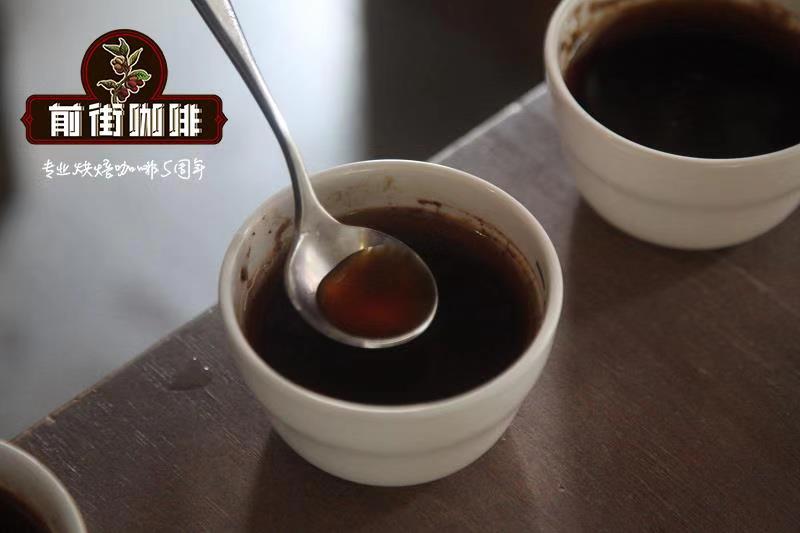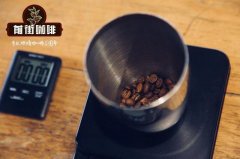Is there a grade in Jamaica Blue Mountain Coffee? the grading system of coffee beans is shared.

Professional coffee knowledge exchange more coffee bean information please follow the coffee workshop (Wechat official account cafe_style)
Brief introduction of Qianjie-Coffee grading system
1. Grading according to screen
The way of sieve grading is to grade according to the size of raw coffee beans. Raw beans are graded by determining the size of the beans through a holed iron plate sieve. The size of the hole in the screen is 1x64 inches (less than 0.4mm), so the size of the screen indicates that there are several 1x64 inches. For example, the size of sieve 17 is 17thumb 64 inches, which is about 6.75mm. The larger the number of the screen, the bigger the particles of coffee beans.
2. Classification according to the altitude of the coffee producing area
This classification standard is mainly because the quality of coffee produced at high altitude is generally higher than that at low altitude, because high altitude and low temperature, slow coffee production is conducive to the accumulation of good substances. And the raw beans with high maturity have good expansibility when baking, which is beneficial to baking, and the quality is more stable. This kind of coffee beans have a high density, a relatively hard texture, and a more complex flavor after baking, so they are also called "hardness".
3. Classification of defective beans
Many coffee producing countries mainly pick coffee by hand, but most of them are processed by dry method. Dry processing is easy to mix with immature beans and other defective beans, so it is classified according to the number of bad points. The method of identification is to randomly take 300 grams of samples and put them on black paper, because black paper can best avoid reflection. Then by the professional appraiser to screen and determine, find out the defective beans in the sample, and accumulate different scores according to the number of defects. Coffee production countries such as Ethiopia, Peru, etc., use this classification standard.
Jamaica is based on the production area, altitude, screen, defective bean proportion comprehensive as the rating standard, defective bean proportion as an important basis. Jamaica strictly controls the proportion of defective beans, and the proportion of defective beans in all grades is no more than 4%.
Jamaica Blue Mountain produces different grades of coffee according to different elevations. Authentic Blue Mountain coffee must be made from beans growing at an altitude of 910-1700m. Coffee grown at an altitude of 460-910m is called Jamaican Alpine Coffee. Coffee grown below 460m is called Jamaican preferred Coffee. Like wine, Blue Mountain Coffee has different estates to distinguish between the three major producing areas, St. Andrew, Portland and St.Thomas.
There are four grades of pure Blue Mountain Coffee. NO.1, NO.2, NO.3 and PB,PB are round beans. And packed in traditional 70kg / barrel wooden barrels, and obtained the quality recognition certificate issued by the Jamaican Coffee Industry Committee (CIB). Because the output is very small, coupled with Japan's investment in the Jamaican coffee industry, it is given the right of preemption, so excluding 90% of the Blue Mountain purchased by Japan, the remaining 10% of the quota is for other countries, so it is always in short supply in the international market, and the price is high. You can't buy authentic Blue Mountain Coffee in the supermarket. The so-called Blue Mountain blend Coffee is made of other coffee varieties and alpine coffee or very little Blue Mountain Coffee, which is very different from 100% Blue Mountain coffee.
Knowledge gift: only more careful planting can get higher quality coffee, only high-quality coffee can get high evaluation, so coffee rating subdivision and strict control must have advantages and disadvantages to improve coffee quality.
END
Important Notice :
前街咖啡 FrontStreet Coffee has moved to new addredd:
FrontStreet Coffee Address: 315,Donghua East Road,GuangZhou
Tel:020 38364473
- Prev

Where is the best coffee in the world? what is the ranking of Jamaican Blue Mountain Coffee?
Professional coffee knowledge exchange more coffee bean information please follow the coffee workshop (Wechat official account cafe_style) Front Street-Jamaica Blue Mountain Coffee brief introduction Coffee varies from different places, different varieties, different flavors. Coffee in the same area will be picked in different ways and roasted in different ways, and the taste of the coffee will be completely different. Same
- Next

What is the real Blue Mountain Coffee beans Iron pickup Coffee characteristics Blue Mountain Coffee belongs to Arabica?
Professional coffee knowledge exchange more coffee bean information please follow the coffee workshop (Wechat official account cafe_style) front street-the real Blue Mountain Coffee and varieties introduction the Blue Mountain Mountains are located in the east of the island of Jamaica, because the mountain is surrounded by the Caribbean, whenever the weather is clear, the sun shines directly on the blue sea, reflecting the bright blue light of the sea.
Related
- Beginners will see the "Coffee pull flower" guide!
- What is the difference between ice blog purified milk and ordinary milk coffee?
- Why is the Philippines the largest producer of crops in Liberia?
- For coffee extraction, should the fine powder be retained?
- How does extracted espresso fill pressed powder? How much strength does it take to press the powder?
- How to make jasmine cold extract coffee? Is the jasmine + latte good?
- Will this little toy really make the coffee taste better? How does Lily Drip affect coffee extraction?
- Will the action of slapping the filter cup also affect coffee extraction?
- What's the difference between powder-to-water ratio and powder-to-liquid ratio?
- What is the Ethiopian local species? What does it have to do with Heirloom native species?

